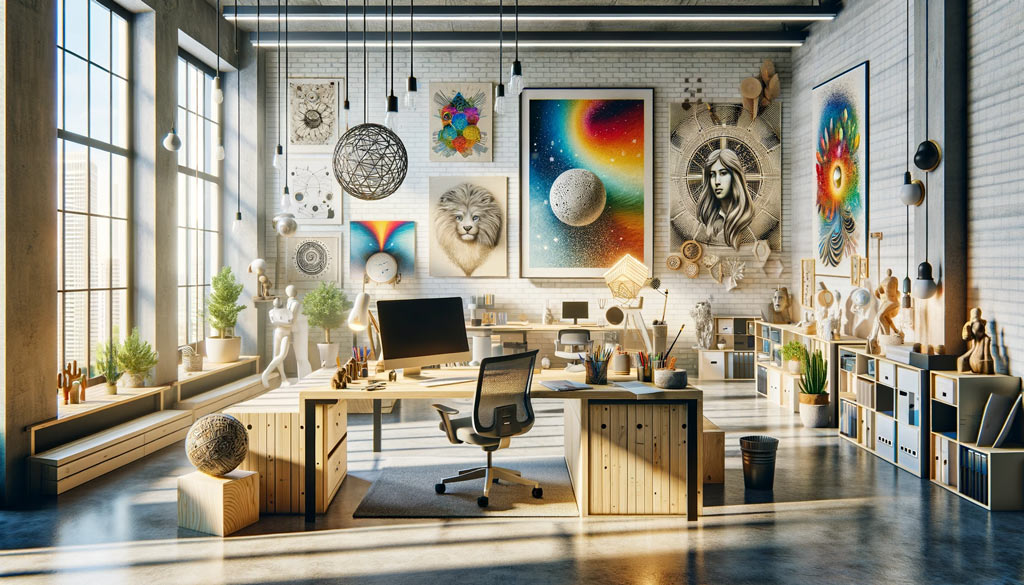
The psychological impact of art in your workplace
Share the article
The work environment plays a crucial role in our productivity and creativity. One of the most effective ways to stimulate these aspects is by integrating art, especially posters, into the workspace. This article explores how art affects our minds and offers tips on how to use this to create a more rewarding work environment.
Research and studies has shown that art in workspaces has a positive impact on productivity, creativity and well-being. A study conducted by Exeter University’s School of Psychology found that employees who had control over the design and layout of their workspace were not only happier and healthier, but also up to 32% more productive. It was found that people who worked in spaces enriched with art or plants were 17% more productive than those in minimalist spaces.
Further investigations and studies highlights that art in the workplace can promote well-being, stimulate productivity and creativity, and support belonging, community, and culture in workplaces that invest in integrating art into their spaces. A comprehensive survey found that 78% of employees surveyed agreed that artwork in the workplace helps reduce stress, 64% agreed that it increases creativity and innovation, and 77% agreed that it encourages the expression of opinions.
The impact of art in the workplace
- Increased creativity: Art stimulates creative thinking by breaking the monotony of a traditional work environment. Colorful and inspiring posters can spark new ideas and perspectives.
- Improved work ethic: Art can boost morale and contribute to a sense of well-being. When employees feel good, they also perform better.
- Stress reduction: Nature scenes and calming colors in artwork can reduce stress and anxiety, leading to higher concentration and efficiency.
Tips for integrating art into your workspace
- Choose motifs that inspire: Choose posters that reflect the company's values or that personally motivate and inspire you and your employees.
- Vary styles and themes: Mix different art styles and themes to appeal to a wider group of people and to keep the work environment dynamic and interesting.
- Create a balanced interior: Make sure that the art complements the work environment rather than dominating it. There should be a harmonious balance between the art and the rest of the workplace decor.
Art and workplace identity
- Company culture: Use art to reflect and reinforce your company's culture and identity. This can help create a sense of belonging and community among employees.
- Personal touch: Encourage employees to choose or contribute artwork. This adds a personal touch and can increase a sense of engagement and belonging.
Considerations for design and placement
- Placement is key: Place art where it can be seen and appreciated – for example, in common areas, meeting rooms, or in line of sight from workstations.
- Using light correctly: Make sure the artwork is well lit, either through natural light or by using directional lighting.
Integrating art into your workspace is more than just an aesthetic enhancement, it's an investment in employee well-being and productivity. By embracing the power of visual stimulation, you can create a work environment that not only looks good but also fosters a positive and creative work culture.

